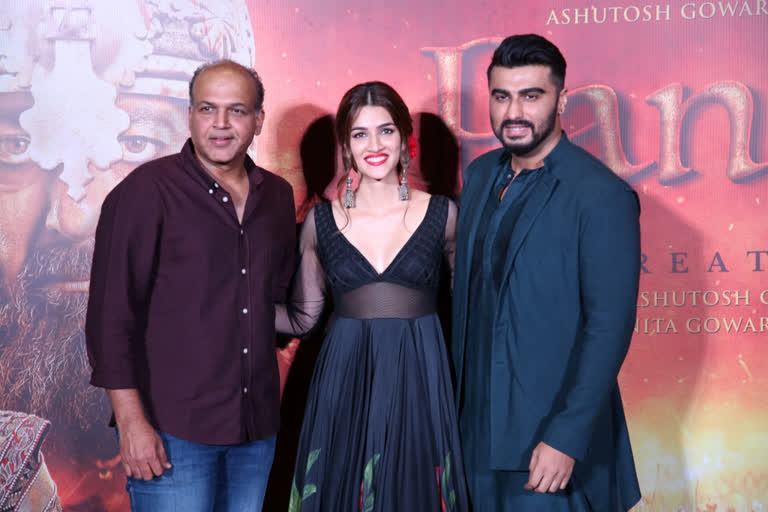Mumbai: Filmmaker Ashutosh Gowariker has urged people to watch his upcoming historical drama Panipat first, before forming perceptions about the film.
Controversies have been piling up ever since the trailer of Panipat was launched a while back, and Gowariker on Wednesday evening said while promoting the film: "I think people need to watch the film. After watching this film, they will get all the answers of their questions, curiosity or aggression. When they watch the film, they will realise that it has been made with honest intent and it is all good in the film."
His words don't seem to have had much impact because on Thursday, Nawabzada Shadab Ali Bahadur -- an eighth generation descendent of Peshwa Bajirao -- served notices to the film's producers Sunita Gowariker and Rohit Shelatkar, and director Ashutosh Gowariker over a certain dialogue that actress Kriti Sanon as Parvati Bai delivers in the film.
The problematic dialogue features in the trailer of the film, and it goes: "Maine suna hai Peshwa jab akele muhim par jaate hain to ek Mastani ke saath laut te hain (I've heard that whenever the Peshwa goes to the war alone, he returns with a Mastani)."
This dialogue is the latest in line of many storms that the film has been facing. Earlier, sections of the Afghan community expressed displeasure with the portrayal of Ahmad Shah Abdali, the Afghan emperor. Then, many people complained that the look of the film, going by the trailer, seemed cloned from Sanjay Leela Bhansali's blockbuster, "Bajirao Mastani".
The film, which is based on the third battle of Panipat, was fought between the Marathas and Abdali in 1761, is slated for release on December 6. It stars Arjun Kapoor, Kriti Sanon and Sanjay Dutt.
Asked what inspired him to make a film on the third battle of Panipat, Gowariker said: "The film is about a place called Panipat in Haryana, where three battles have been fought. We don't know much about first two battles. I depicted the second battle of Panipat in ‘Jodhaa Akbar'. We haven't known much about the third battle and we never showed interest because we (Marathas) lost that battle."
He continued: "I started reading about it five to six years ago and I realised that it was an inspiring story -- one of valour and courage. It is about the Maratha warrior Sadashiv Rao Bhau, who led the battle to stop the attack of Abdali. We haven't read much about this battle in our school textbooks. I think for today's generation, it's important to know what sacrifices these Maratha warriors made in 1761."
READ |Panipat makers served notice over dialogue
On the comparisons with Bajirao Mastani, he said: "Normally, people tend to compare films that are made in the same genre, be it historical drama, comedy or any other genre. A new film of a certain genre is always compared with previous films of that genre. We have shown a period in our film that is 20 year after the events of Bajirao Mastani. Sadashiv Rao Bhau belonged to the next generation, after Peshwa Bajirao, so their costumes, tradition, standards of living, residences were the same. It's obvious that people will draw comparisons."
Gowariker pointed out that his earlier historical Jodhaa Akbar was compared with K. Asif's Mughal-e-Azam.
"When I made Jodhaa Akbar, people compared it with Mughal-e-Azam. People compared Hrithik (Roshan) with Prithviraj Kapoor ji. Prthviraj ji played the old Akbar in Mughal-e-Azam and Hrithik played a young Akbar in Jodhaa Akbar, yet people compared the films. It's a natural thing. We were ready for the comparisons. At least, our film is being compared with one of the best films of the historical drama genre," he summed up.
From IANS inputs.
